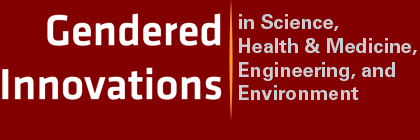Feminism advocates social, political, economic, and intellectual equality for women and men. Feminism defines a political perspective; it is distinct from sex or gender.
Feminism means very different things to different people. The many variants of feminism are associated with a variety of philosophical and political outlooks. Sue V. Rosser has distinguished at least ten different feminist approaches to science and technology (Rosser, 2008).
Many people in Europe, the U.S., and elsewhere practice feminism without self-identifying as “feminists.” The vast majority of Europeans and Americans are feminists, at least liberal feminists—that is to say, they support equality and professional opportunities for women. It is important to recognize that what is labeled "feminist" in one time and place becomes business as usual in another. It is a curious phenomenon that when feminist practices or points of view become widely accepted in science, medicine, engineering, or the culture more generally, they are no longer considered "feminist," but simply "just" or "true." The result is that the term "feminist" continues to refer to people and policies on the radical cutting edge (Schiebinger, 1999).
Here we present four broad feminist approaches. Although these approaches differ, they are not mutually exclusive, nor does one supersede any other. These approaches represent basic strategies guiding research, legislation, and policies.
1. Liberal Feminism, or the Equality Approach, has been the leading form of feminism in the U.S. and much of Western Europe since English feminist Mary Wollstonecraft's vigorous call for equality for women in her 1792 Vindication of the Rights of Woman. It has informed major legislation guaranteeing women equal rights, education, pay, and opportunity (in Europe the Amsterdam Treaty of 1999; in the U.S., the Equal Pay Act of 1963, Title IX of the Education Act Amendments of 1972, and the Equal Opportunity Employment Act of 1972). Liberal feminism has been criticized for not recognizing sex and gender differences. It is often considered “assimilationist,” meaning that women, and not society or culture, are required to change in order for women to succeed.
2. Difference Feminism represents a broad spectrum of feminisms that emphasize differences between women and men. This approach arose in the 1980s and 1990s in efforts to revalue qualities traditionally devalued as "feminine"—such as subjectivity, caring, feeling, or empathy. This approach identifies bias in science and technology by seeing what has been left out from feminine perspectives—sometimes expressed as “women’s ways of knowing.” Difference feminisms have been criticized as being essentialist. Difference feminism tends to romanticize traditional femininity and masculinity and to reinforce conventional stereotypes. This approach fails to take into account that women and men across classes and cultures hold many different perspectives and values.
3. Co-Constructionism analyzes how science/technology and gender mutually shape each other (Faulkner, 2001; Oudshoorn et al., 2004). Gender identities are produced simultaneously with science and technologies; neither precedes the other. Gender is understood to be material, discursive, and social; it permeates artifacts, culture, and social identities. Co-constructionism seeks to avoid both technological determinism (seeing technology as the prime driver of modernity) and gender essentialism (seeing gender characteristics as innate and unchangeable).
4. Sex and Gender Analysis enriches science, health & medicine, and engineering research by analyzing how sex and gender influence all phases of research, including setting priorities, making funding decisions, establishing project objectives and methods, gathering and analyzing data, evaluating results, developing patents, and transferring ideas to markets (Schiebinger et al., 2011). This approach prioritizes analysis (not prescription) to guide efforts to achieve gender equality. Simultaneously, this approach employs sex and gender analysis as a resource to stimulate creativity in science and technology, and by doing so enhance the lives of both women and men.
Works Cited
Faulkner, W. (2001). The Technology Question in Feminism: A View from Feminist Technology Studies. Women’s Studies International Forum, 24 (1), 79-95.
Oudshoorn, N., Rommes, E., & Stienstra, M. (2004). Configuring the User as Everybody: Gender and Design Cultures in Information and Communication Technologies. Science, Technology & Human Values, 29 (1), 30-63.
Rosser, S. (2005). Through the Lenses of Feminist Theory: Focus on Women and Information Technology. Frontiers: A Journal of Women’s Studies, 26 (1), 1-23.
Schiebinger, L. (1999). Has Feminism Changed Science? Cambridge: Harvard University Press.
Schiebinger, L., & Schraudner, M. (2011). Interdisciplinary Approaches to Achieving Gendered Innovations in Science, Medicine, and Engineering. Interdisciplinary Science Reviews, 36 (2), 154-167.





